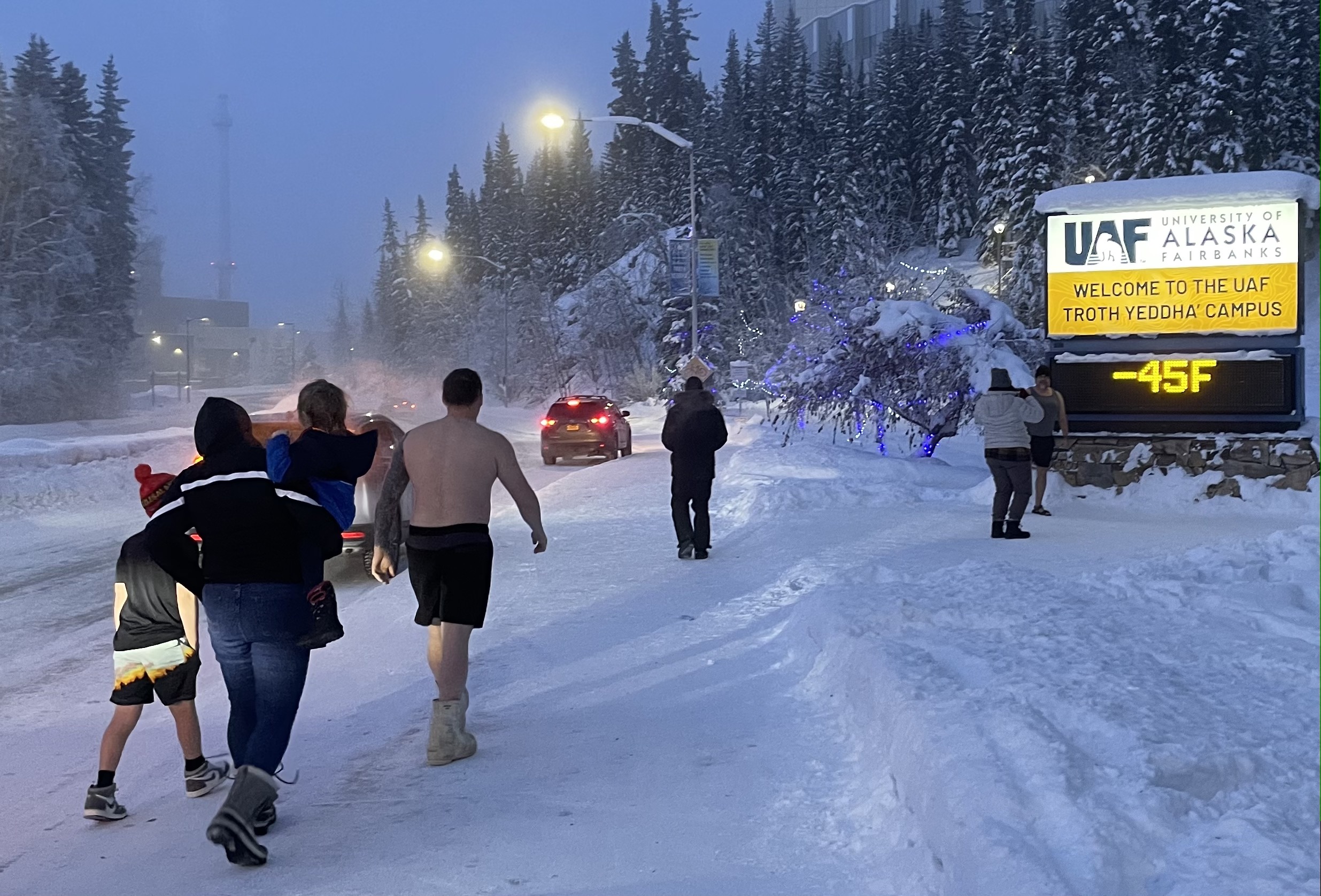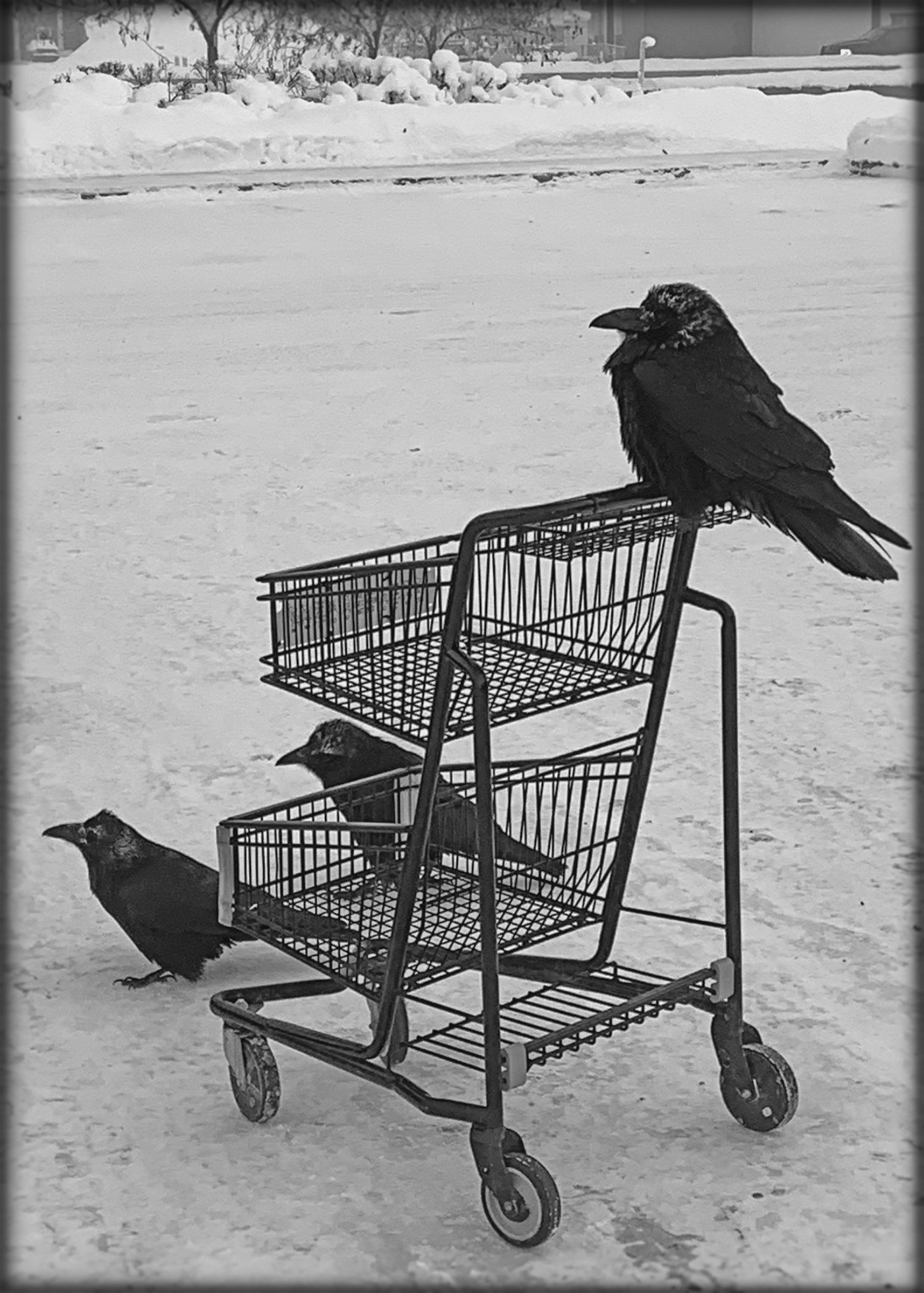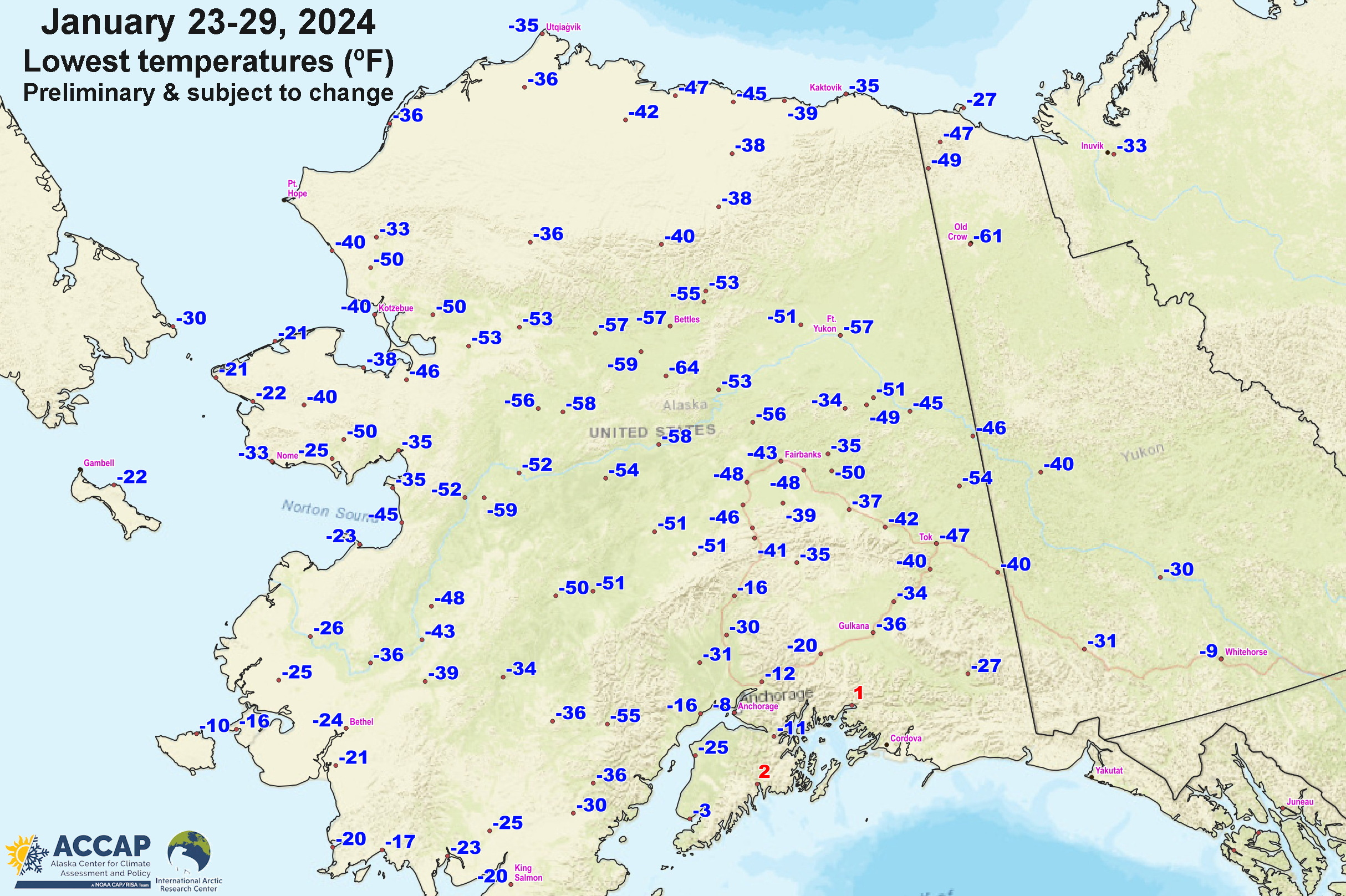Alaska is still good at making cold
Ned Rozell
907-474-7468
Feb. 1, 2024

Fairbanks residents engage in a favorite cold-weather activity of taking photographs of themselves in front of the University of Alaska Fairbanks time-and-temperature sign on the morning of Jan. 27, 2024. Photo by Ned Rozell.
Moments after I bashed some sheet rock with a hammer to expose my home’s water pipes to warmer air, I logged in to see another Special Weather Statement.
A meteorologist with the National Weather Service in Fairbanks wrote: “After a brief ‘warm-up’ from the bitterly cold temperatures recently, another prolonged cold-snap will return to the Interior.
“Valley locations will fall back to -40 F to -50 F . . . for overnight lows, with high temps struggling to warm much beyond -30 F.
“Residents should prepare as needed for yet another old-fashioned Interior Alaska cold snap.”

Ravens survey the scene outside a Fairbanks grocery store as the temperature dipped to minus 40 F recently.
This frigid situation is not unusual, according to Rick Thoman, a climate specialist for the Alaska Center for Climate Assessment and Policy. “This is not record cold,” he said after passing on a graphic he made showing impressive minuses all over Alaska during the past week. “Not a single climate station with at least 30 years of observations set even one daily record low.”
My friend Chris Swingley confirmed that this cold, though breathtaking, was not the most extreme he has recorded at his home on Goldstream Creek in Fairbanks. Readings on his thermometer are usually the coldest on a network of Fairbanks temperatures he compiles on his website. As I write this, Chris’s home is at minus 49.1 degrees Fahrenheit.
He recorded a minus 52 a few days ago, falling just short of the minus 53.3 of Jan. 29, 2012.

Rick Thoman of the Alaska Center for Climate Assessment and Policy created this graphic showing the lowest temperatures recorded at different locations throughout Alaska in late January 2024.
“Last week’s cold snap was the second-coldest since we moved here more than 15 years ago,” he wrote in an email.
Even though no records have yet fallen, it seemed chilly as I watched willow twigs shatter within the mouths of a mother and yearling calf moose outside our window at home.
And as ravens perched on metal light poles chilled to minus 40 with bare feet (accomplished with their adaptation of “countercurrent heat exchange,” in which blood vessels going to and from their feet allows blood flowing down to their feet to warm the blood coming back to their hearts).

Two moose eat willow twigs outside a Fairbanks home at minus 40 degrees F. A local biologist once calculated that moose eat the equivalent of a large garbage bag full of frozen twigs each winter day.
As I edit this the morning of Feb. 1, another peek at weather stations around Alaska shows that the current temperature at the village of Tanana — located at the junction of the Tanana and Yukon rivers — is minus 54.4 F.
Where does this cold air come from, in this time when our planet seems to be in an extreme warming phase?
“We manufactured (this cold air) right here in Alaska,” Thoman wrote in an email. “Very cold low pressure aloft moved from west to east across the Beaufort Sea January 23-24, but as it did some of the energy of that system broke off and moved out over mainland Alaska.”

A black-capped chickadee ponders sunflower seeds on a feeder platform in Fairbanks during a recent minus 40 degrees F day.
Deep cold air is sort of reassuring in this place that has always featured it. At the same time, it is exhausting to keep our machines and homes functioning.
Complain as we might when that car door won’t shut, for reasons that might be hard to remember many of us have chosen to live here. It is a place very far from the Equator, where the planet nods so away from the sun that Alaska makes its own cold.
Since the late 1970s, the University of Alaska Fairbanks' Geophysical Institute has provided this column free in cooperation with the UAF research community. Ned Rozell ned.rozell@alaska.edu is a science writer for the Geophysical Institute.


